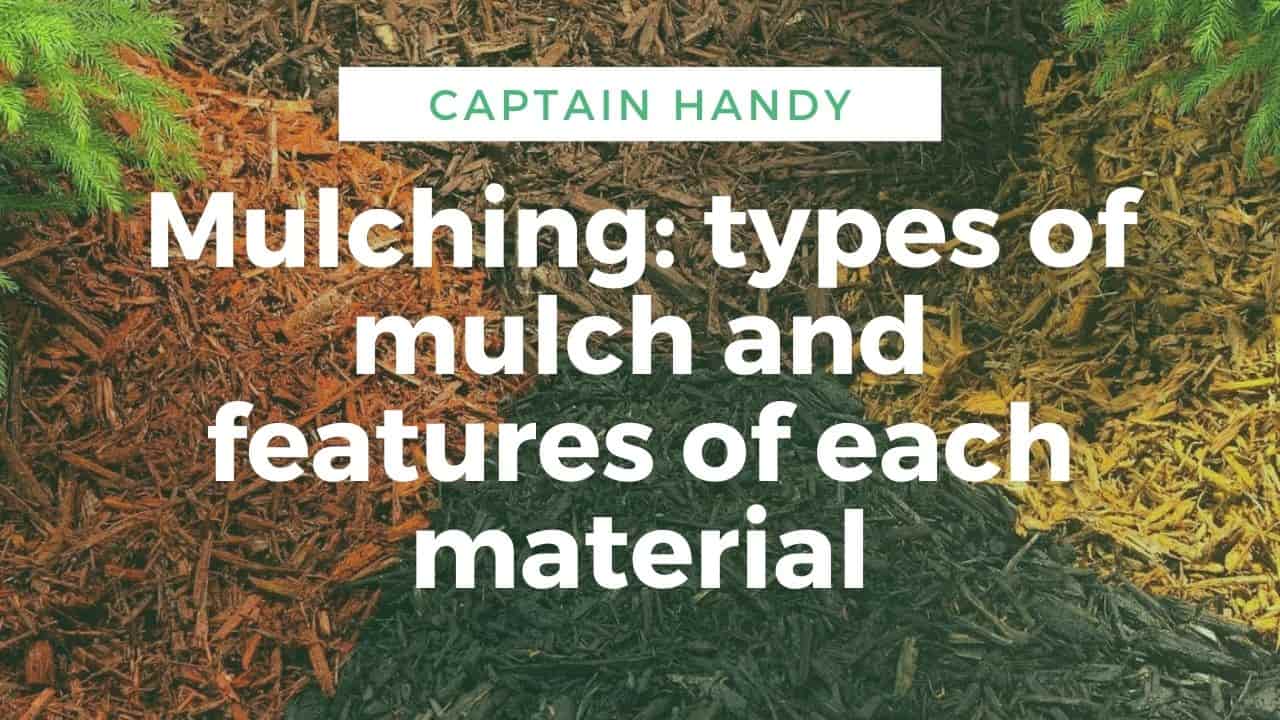
Table of Contents
Mulching – types of mulch and features
Growing all kinds of crops in the garden and vegetable garden it is important to protect them from diseases and pests. Mulch is an excellent solution to this issue. Figuring out what mulching is, it is a layer of organic or industrial materials with which the gardener covers the soil, where berry bushes, trees or vegetables grow, also mulch in Toronto can be used for decorative purposes. More details about the types and methods of mulching will be discussed below.
What is mulch and what is it for?
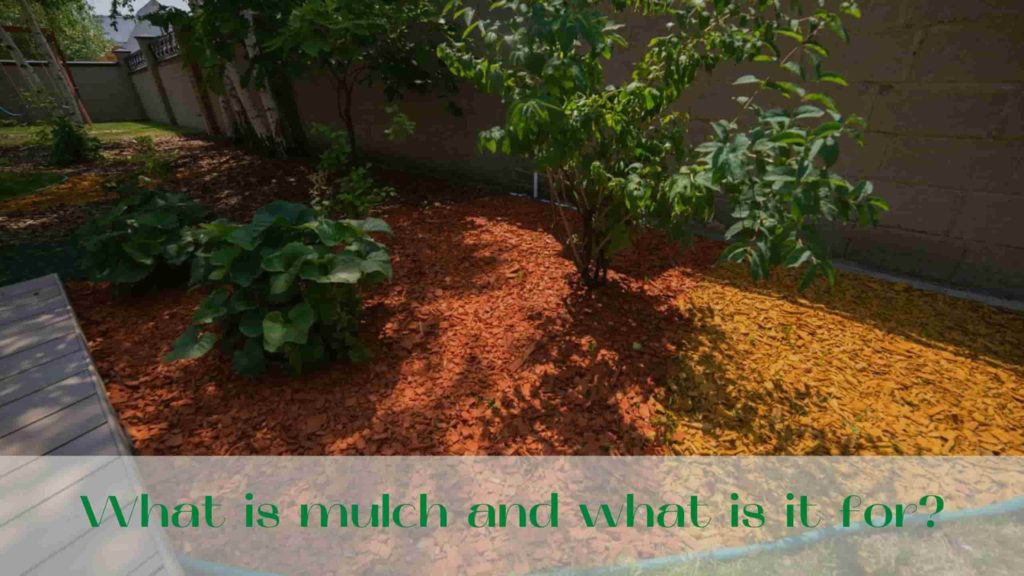
The gardener must necessarily know how and with what to mulch the soil, because this is the way to a quality and rich harvest.
This special technology allows you to protect plants from weeds and diseases. As a mulch can act as a variety of materials, the structure of which allows you to use them to cover the soil. In addition to the fact that mulch is often used for decorative purposes, it can also provide:
- Protecting the roots, thanks to the preservation of the right indicator of moisture and acidity in the soil;
- Maintaining the temperature in the soil, as well as the nutrient environment;
- Care during sudden drops in temperature;
- protection against weeds.
A useful feature of properly selected mulch is also the fact that it does not harden and thus does not form a hard crust, allowing plants to develop.
It is worth noting that mulch, depending on the material selected for this procedure, can be organic and inorganic. We will tell you about each option, so that the gardener can decide for himself, from what he wants to make mulch for his plot.
Types of organic mulch
Organic mulch, as its name makes clear, is the use of materials of organic origin. Usually it is what remains after standard agro-technical activities. Let us describe in detail the most popular and widely used options.
Wood chips for garden
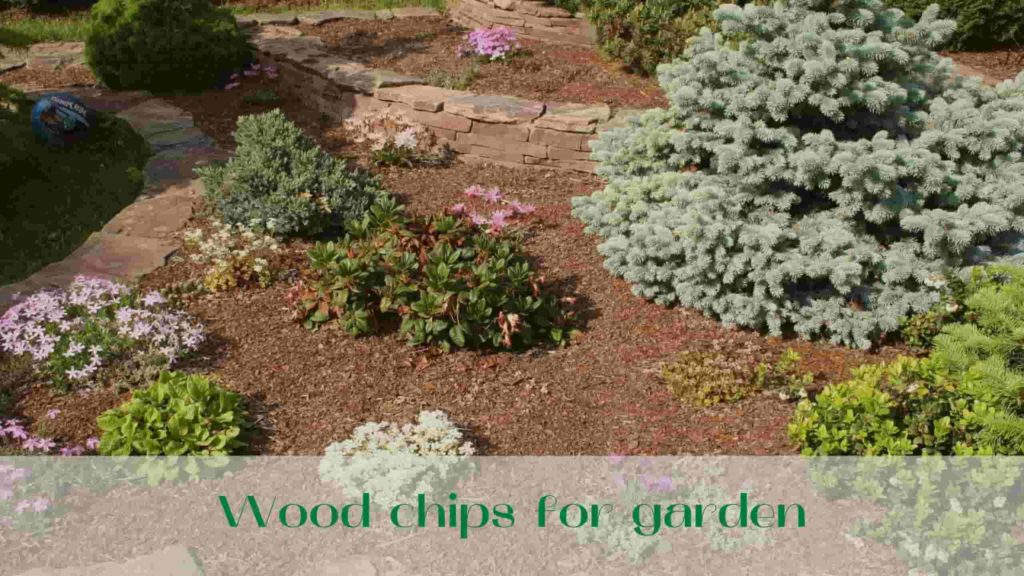
Wood chips for garden are excellent for mulching garden shrubs, for example, currants or raspberries, as well as those places in the garden, which are rarely subject to recultivation and other treatments. The fact is that such mulch finally decomposes in about a year and a half to two years. This should be taken into account, so as not to encounter problems when working out the plot in the future.
If it was decided to make mulch wood chips for garden, it should be understood that such material can develop a lack of nitrogen in the soil, because wood in the process of decomposition absorbs this substance from the soil. Avoid nitrogen starvation can be quite simple way. You need to fertilize the soil with fertilizer before laying the material.
Please note: sawdust, which has been stored in the corner of the garden for a long time, most likely has time to “sour”, because in the depths of the heap there is certainly a lack of oxygen. Such material is categorically not suitable for mulching beds, because it will not only not bring the plants benefits, but also can cause harm. In this case, the sawdust must be pre-spread in a thin layer and give them a good drying.
A mulch of sawdust and wood chips for sale is excellent in the fight against slugs. The latter prefer smooth and well-moistened surfaces, in connection with which wood material will not be attractive to them.
Straw mulch
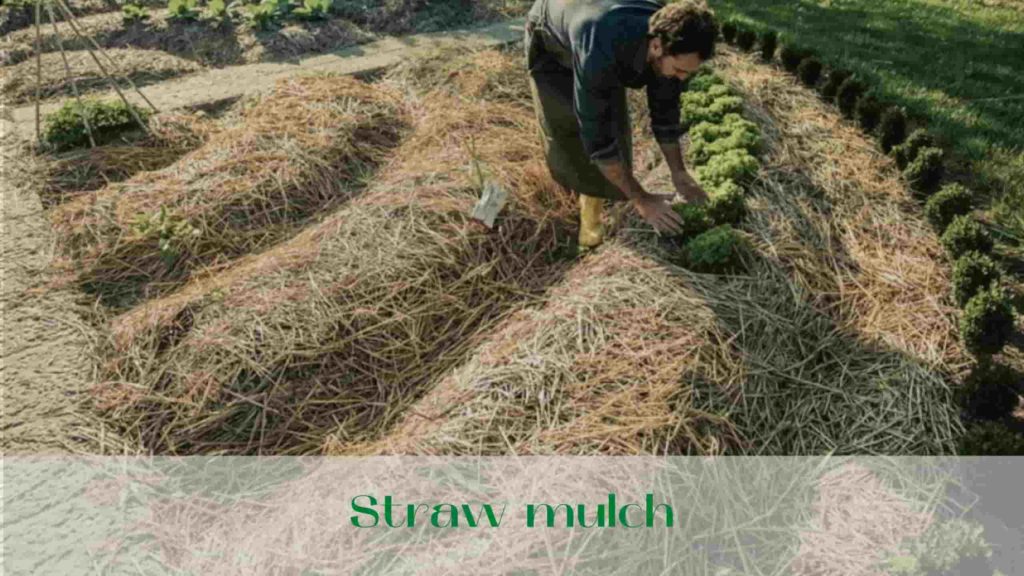
Straw mulching is a very common option. It is recommended to lay this material with a layer of about 15 centimeters thick. It should be understood that such mulch will not interfere with the further development of plants, because very soon the straw will settle down at least 7-8 cm.
Soil under garlic, blackberries, strawberries, and basil can also be covered with this material.
Pine bark mulch
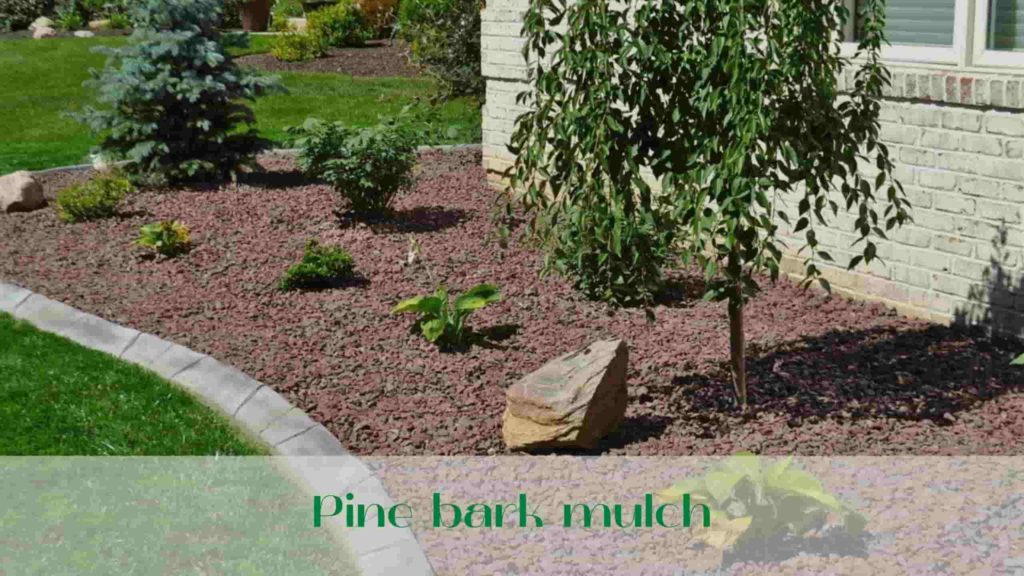
Make mulch with your own hands from the bark is not difficult at all, the main thing is to have access to conifers. Bark can repel water, which is the reason for its long decomposition. It is best to use bark for garden trees and shrubs.
Bark taken from coniferous tree species should not be used for tomato mulching purposes. The fact is that aromatic volatile elements, which are emitted by such a material, will be detrimental to tomatoes.
Among other things, the bark looks very attractive as mulch. Many gardeners prefer to use its decorative properties, mulching flowerbeds. Such plot development will not only be useful, but also beautiful. Modern designers are increasingly advised to use pine bark mulch in the design of the garden.
Pine needles
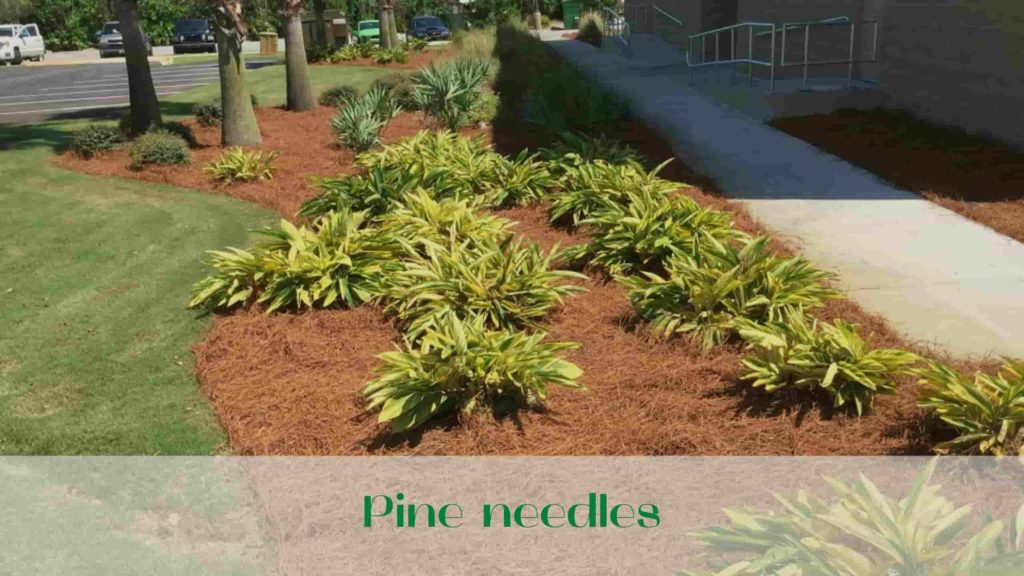
Mulching with pine needles is very liked by strawberries, blueberries and eggplants. Despite the fact that some gardeners refuse such material, as they believe that the needles oxidize the soil, yet it has been proven by experience that covering the bed with a 7-cm layer of pine needles will only have a positive effect on the plants. Even if you mulch the same beds two years in a row, the acidity of the soil will not change much. Mulching strawberries with needles should be carried out in autumn.
It is worth remembering again about the decorative properties of mulch. Pine needles are often mulched flowers in flowerbeds, using the material as a decoration. Additionally, colorful pine needles and crushed pine cones can be used.
Fallen leaves
Mulching the soil in the fall is also often carried out with fallen leaves. Almost any leaves will do, but some gardeners prefer the leaves of individual plantings, for example, a walnut tree.
It should be understood that the leaves in the process of decomposition turn into a very valuable organic fertilizer. They contain potassium, calcium, phosphorus, nitrogen, etc. Such elements work very well to improve the quality of growth and development of crops.
An interesting experience was conducted in one of the forestry units. Employees removed natural forest litter from fallen leaves in a certain area and repeated this for several years. As a result, the growth of stands in the forest was reduced by about 20%. It took twice as long to bring the forest floor back to its original state and thereby restore the growth of new trees.
Fallen leaves can be used to mulch cabbage, beans, peppers, tomatoes and eggplants. It is important to do this after the soil has had a chance to warm up.
The foliage material can also be used in flower beds. In case of strong frosts this product will perfectly protect the root system, and as soon as the first spring heat comes, the bulbs will not be able to sprout quickly, thus they will be safe from possible repeated frosts.
Moss
This material is suitable only for areas with non-acidic soil, because moss can increase the level of acidity.
It is forbidden to use moss as a mulch for strawberries and strawberries, because these berry plants will simply rot under it. But for blueberries, raspberries, radishes and potatoes, moss will be an excellent mulch.
Such material can also mulch roses, azaleas and some other flowers without fear. Many gardeners also cover pears and apples with this mulch. Moss tends to collect excess moisture from the soil, thus protecting trees from overwatering, but in a period of drought, the same moisture will give back. In addition, the discussed material is an excellent antiseptic.
Inorganic mulch
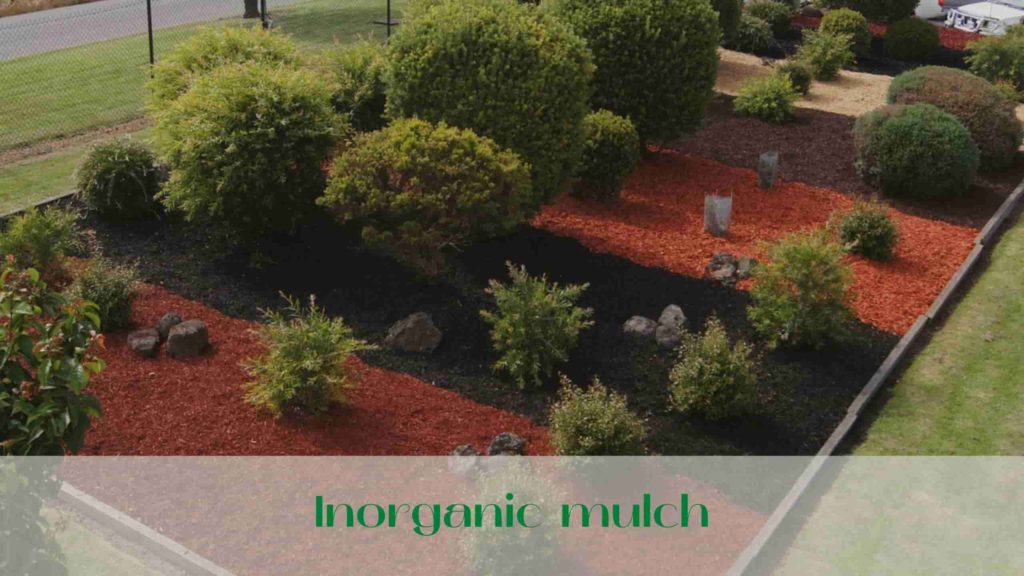
Mulching with inorganic materials consists in covering a site with rocks or products of industrial production. Such mulch protects the soil well, but, of course, does not perform the additional function of fertilizer.
In general, inorganic mulch can be classified as follows:
- Film (more often black, but sometimes colored), cardboard and paper;
- Stones – pebbles, gravel, gravel, etc;
- expanded clay.
The second and third types from the list are often used for decorative purposes, as they perfectly decorate landscape and garden compositions. Today you can find stones of different colors on sale, which allows you to realize any design fantasy.
As for the film, it is good at retaining moisture in the soil. But at the same time, this material can be used only once, as by the next year it will already be unusable. Those who decide to use the film for mulching, should be aware of a number of points, which they will probably have to deal with:
- Watering. You need to think about how the plants will be moistened – by dripping or through holes in the cover;
- Slugs. They can collect under the foil, so this too will need to be dealt with;
- Heat. You should be aware of the ability of film-covered plants to tolerate overheating, which is enhanced by the greenhouse effect under the film.
You can extend the life of the film by covering it additionally with a thin layer of straw or hay.
The film is often used as mulch in alpinaries. It does not allow weeds to sprout. But in order not to spoil the aesthetic appearance of the compositions, decorative stones are placed on top of it.
Today textile materials (geotextiles), which are made on the basis of polypropylene fiber, are very popular among gardeners. Such a material is cheap, but of high quality. It is able to absorb the sun’s rays and does not allow weeds to sprout on the site.
Film for mulching

Such a film should be laid on the bed, and at the edges to fix with staples made from thick, strong wire. You can also use for its fixing ordinary boards or the soil itself, which should be poured on the edges.
In order to make the planting of vegetable crops, you will need to make small notches in the form of a cross or slits directly in the place of planting. Next, you need to dig a hole and plant the plant itself. Through the slits should be abundantly watered the bed.
If the film mulch was covered with plants-perennials, such as strawberries, then at the end of the season it is not necessary to remove the film from the bed at all. Such inorganic mulch can stay there as long as the strawberries will grow, which is about 3-4 years. But it is necessary not to forget to make fertilizers in the soil, because the film does not decompose, and therefore, as a fertilizer can not work. It is best to introduce humus into the soil before mulching of this kind.
Despite the fact that the film helps to retain moisture in the soil for a long time, it is still necessary to water the area periodically. Natural moisture in the form of rains or fog in this case is excluded, so about watering should always be remembered.
Conclusion
To summarize, it is worth once again noting the importance and usefulness of such an event as mulching in Toronto. Each gardener can choose the material to cover the site to his taste. This will noticeably simplify the care of plants, as well as significantly increase yields.
